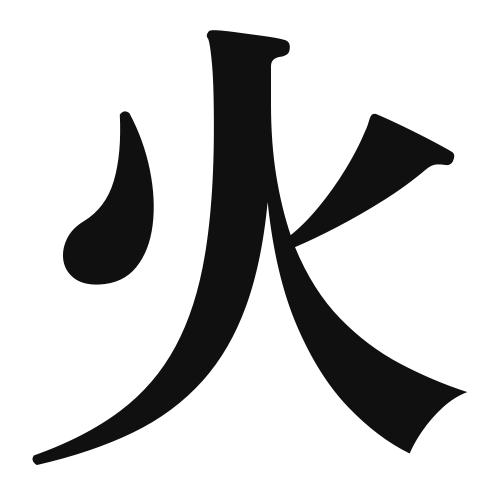1. Overview of Meaning
The kanji “火” (hi) means “fire.” It represents the element of fire and is often associated with heat, light, and energy. In various contexts, it can symbolize passion, destruction, or transformation.
2. Formation and Radical
Formation of the Kanji: The kanji “火” is a pictogram that visually resembles flames. It is classified as a pictographic character, which means it was created to represent a physical object or phenomenon.
Radical: The radical for “火” is also “火,” which is used in other kanji related to fire or heat, such as “炎” (en, meaning flame) and “煮” (ni, meaning to boil).
3. Examples of Usage
Common Words and Phrases: Some frequently used words that include “火” are:
- 火事 (kaji) – fire (as in a fire incident)
- 火山 (kazan) – volcano
- 火曜日 (kayōbi) – Tuesday (literally “fire day”)
Example Sentences in Daily Conversation:
- 「火事が起きたら、すぐに119に電話してください。」(If a fire breaks out, please call 119 immediately.)
- 「今日は火曜日だから、友達と会う予定です。」(Today is Tuesday, so I plan to meet my friends.)
4. Synonyms and Antonyms
Similar Kanji: A similar kanji is “炎” (en), which means “flame.” While both relate to fire, “炎” specifically refers to the visible flames, whereas “火” can refer to fire in a broader sense.
Opposite Kanji: The kanji “水” (mizu) means “water,” which is often considered the opposite of fire, as water extinguishes fire.
5. Cultural and Historical Background
Relation to Japanese Culture: Fire has significant cultural importance in Japan, symbolizing purification and protection. It is often used in rituals and festivals.
Proverbs and Idioms: One common proverb is “火のない所に煙は立たぬ” (hi no nai tokoro ni kemuri wa tatanu), which translates to “Where there is no fire, there is no smoke,” meaning that rumors or problems often have some basis in truth.
